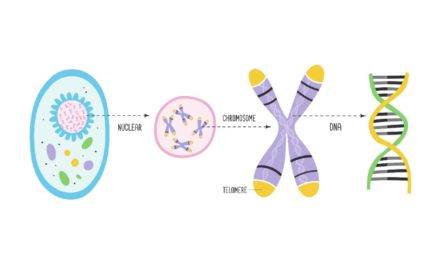Maybe you do, or maybe you don’t. But, in any case, it is a subject that you —and all women— are surely interested in, as it provides key information for making decisions about motherhood, essential for those who do not rule out becoming a mother in the future.
Your ovarian reserve is very easy to test, as all you need is a vaginal ultrasound and a blood test. In fact, you can ask for an ovarian reserve assessment at your annual gynaecological check-up. But before telling you how it is tested, it is important that you learn about some basic concepts on this subject, which Dr. Marta Devesa, a gynaecologist at our fertility centre, explains in this post.
The ovarian reserve can vary from one woman to another, but it is finite and reaches its maximum before birth for all women. In other words, we are born with all the eggs that we can potentially use throughout our lives. In fact, our ovarian reserve reaches its maximum during the 20th week in the womb (6 to 7 million) and, from that moment on, the decline begins. But don’t worry; at the beginning, it is very progressive. At birth, we have between 1 and 2 million follicles. At puberty, about 400,000. Each month, during our menstrual cycle, we release and lose a variable but limited number of eggs, until we reach the menopause, when the number of eggs we have left is under 1,000.
The most significant decrease begins at the age of 35, after which the rate at which we lose our eggs accelerates from year to year. It is therefore advisable to have children before that age, in order to have a better chance of getting pregnant. You should also know that just because you are young or have regular and normal periods, it doesn’t mean that you have a good ovarian reserve. Therefore, it is important to know what your ovarian reserve is when you are young, even if you are not thinking about motherhood yet.
It is true that, before the age of 30, few women consider becoming mothers, and knowing that you have a low ovarian reserve at 25 or 30 years old can cause added stress or pressure. But it is actually better to have this information when you are young in order to have more room to manoeuvre, than to find out when you are approaching 40, a stage when the quality of your eggs is usually lower, and it is therefore more difficult to achieve a pregnancy.
What exactly is measured?
Here below we explain what gynaecologists measure when assessing a woman’s ovarian reserve:
Antral follicle count: this requires a transvaginal ultrasound scan, as mentioned above. The antral follicles are like “little bags of liquid” with a potential egg inside. Each month, among all the antral follicles, nature selects one to ovulate, and as soon as this happens, the rest are lost through a mechanism known as follicular atresia.
The best time to carry out this count is between the third and fifth day of the cycle (day 1 being the day when bleeding starts). If more than 10 antral follicles are detected (adding both ovaries), it means that your ovarian reserve is correct, and if, on the contrary, there are less than 7, your reserve is low.
The hormones that are measured in the blood test to evaluate your ovarian reserve are:
Anti-Müllerian hormone (AMH): this hormone is produced by the follicles we talked about earlier, i.e. the antral follicles. If it is high (over 3.1 ng/ml), it means that your ovarian reserve is high. If, on the other hand, it is low (under 1 ng/ml), it indicates that your reserve is diminished and hence your reproductive window —i.e. your fertile life span— will be shorter, it will end earlier. AMH is an excellent ovarian reserve marker and is also useful to find out what your response to an ovarian stimulation treatment may be. Even so, a low AMH value doesn’t mean that you won’t be able to get pregnant at that particular moment, especially if you are young. As we have already mentioned, what at a low AMH actually indicates is that your fertile life will end sooner. This value can be measured at any time during your menstrual cycle.
FSH, LH and oestradiol: follicle stimulating hormone (FSH) is responsible for activating the follicles in your ovaries, selecting them to grow; luteinising hormone (LH) is the hormone that induces ovulation, and oestradiol is the hormone produced by your follicles as they mature. All these hormones also provide information on your ovarian reserve, but in order to obtain valid results you should do the blood test during the first days of your menstrual cycle (between the third and fifth day). In general, FSH values above 10 or basal oestradiol greater than 80 pg/ml indicate a low ovarian reserve, although these can fluctuate between cycles (they vary more from cycle to cycle than the anti-Müllerian hormone).
If you have any doubts on this subject, you can consult our specialists. But don’t worry too soon. Every woman is different, and it is important to study each case individually in order to make an overall assessment and make the best decision. The most important thing is that you are well informed.
What should I do if I have a low ovarian reserve?
First of all, don’t panic. In general, this doesn’t mean that you can’t achieve a pregnancy naturally or that you can’t use your own eggs to achieve it, unless you are of advanced fertile age or have additional fertility problems. But you must accept that it is likely that your gynaecologist will recommend that you visit a fertility specialist to assess your case, and you should not rule out the possibility that you may need the help of a fertility treatment.
When the problem is detected in young women who do not wish to become mothers in the short term, they can choose to undergo a fertility preservation treatment, which consists of stimulating the ovaries and then retrieving and vitrifying (freezing) the oocytes, which allows them to have a certain number of their own oocytes in reserve in case they need them in the future. The quality of their vitrified eggs will depend mainly on the age at which they undergo this procedure, but their real ability to produce a pregnancy is not known until they are used. Although there are no guarantees, it is a very good preventive measure, but we recommend that you always consult your specialist beforehand, to make sure whether this is advisable in your specific case, considering your age and personal circumstances, or whether another kind of treatment in the future might be a better option.
The causes of a low ovarian reserve are many and are not always associated with fertility problems. Age is a determining factor, as it is a very common problem for women aged 40 or more, but it can also be related to premature ovarian failure. In addition to genetic causes, other possible causes of a low ovarian reserve are previous ovarian surgery, previous chemotherapy or radiotherapy, environmental pollution, unhealthy lifestyle habits and pathologies such as endometriosis or autoimmune diseases.















